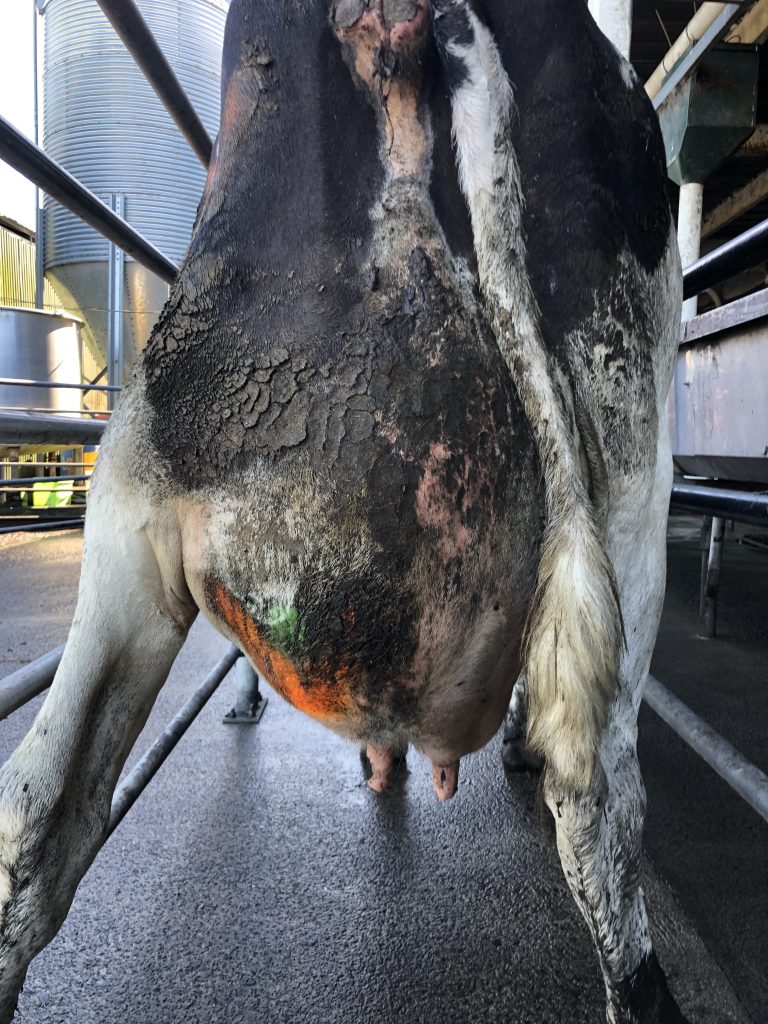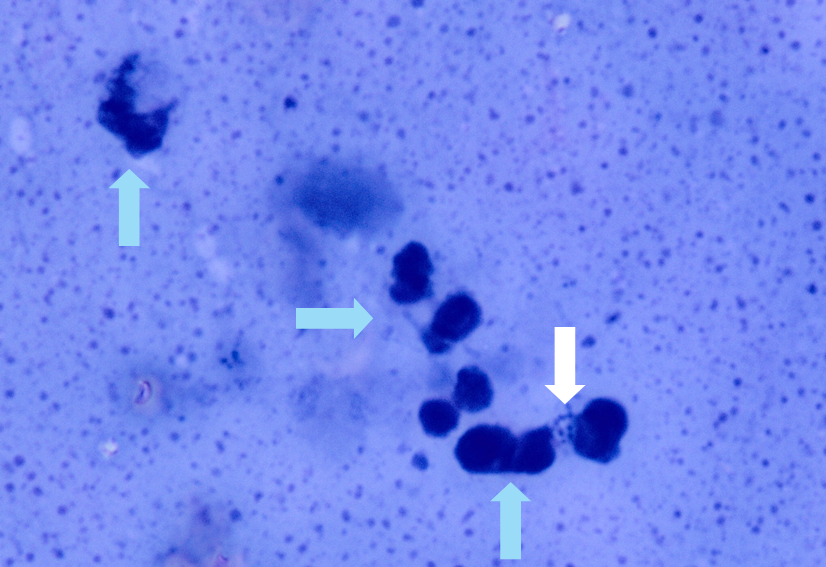Lisa Hulme-Moir
Although we only receive small numbers of cytology submissions from cattle, cytology can be a very useful tool for narrowing your differential list and helping determine an appropriate course of action, particularly if the lesion is unusual. The following is an example of a case where cytology enabled a diagnosis to be reached.
Clinical history
The veterinarian was called out to see an 11-year-old Friesian milking cow that had had a diffusely swollen udder of approximately 1 month duration (Figure 1). The swelling had not responded to non-steroidal anti-inflammatories. The cow was clinically well and milking well with no clinical mastitis. She was RMT negative and was not uncomfortable when milked. On clinical exam, no abnormalities were detected other than the diffusely swollen udder.
Dark bloody red fluid (6mL) containing small pink flocculent clumps was aspirated from the swollen udder and submitted to the laboratory for cytology.
Laboratory findings:
On examination of direct smears from the fluid, moderate numbers of red cells with smaller numbers of degenerate neutrophils and occasional lymphocytes were observed on a heavy, stippled protein background (Figure 2). Bacterial cocci were seen in some areas including within neutrophils, leading to a diagnosis of bacterial infection. A light growth of Streptococcus canis was obtained on subsequent culture.


Discussion:
Streptococcus canis is a resident of the skin and mucous membranes of cats and dogs but does occasionally cause infection in other animal species. In cattle, it has occasionally been reported to cause chronic subclinical mastitis and can act in a contagious manner (Król et al 2015, Eibl et al 2021). In two outbreaks, genotyping linked the infections to cats present on the farms
(Tokofsky and Zadoks 2005, Eibl at al 2021).
Acknowledgements to Georgia Patterson and the team at Franklin Vets Paeroa for the great case.
References:
> Eibl et al. An outbreak of subclinical mastitis in a dairy herd caused by a novel Streptococcus canis Sequence Type (ST55). Animals. 11:550, 2021.
> Król et al. Short communication. Streptococcus canis is able to establish a persistent udder infection in a dairy herd. J Dairy Sci. 98:7090-7096, 2015.
> Tikofsky LL, Zadoks RN. Cross-infection between cats and cows: origin and control of Streptococcus canis mastitis in a dairy herd. J Dairy Sci. 88:2707-2713, 2005.
